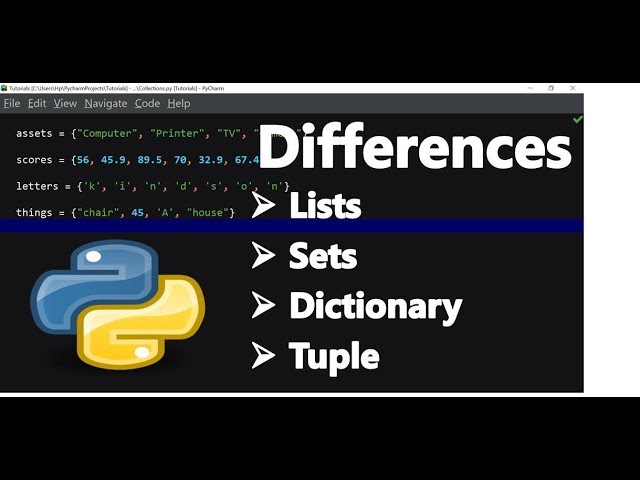Tuple, Set, and Dictionary
Сообщение 2024-07-16 21:35:59
0
8Кб

These are all fundamental data structures used to organize information in programming. Here's a breakdown of each:
Tuple:
- Ordered collection of elements, similar to a list.
- Elements can be of different data types (strings, numbers, etc.).
- Immutable: Once created, you cannot change the elements within the tuple.
- Used for representing fixed data like coordinates (x, y) or product details (name, price, stock).
Set:
- Unordered collection of unique elements.
- Elements can be various data types.
- Useful for storing unique items and performing set operations like checking membership or finding differences between sets.
Dictionary:
- Unordered collection of key-value pairs.
- Keys must be unique and immutable (often strings or numbers).
- Values can be any data type.
- Used for storing data where you need to access it by a specific key, like phone numbers in a phonebook (key: name, value: phone number).
Here's a table summarizing the key differences:
| Feature | Tuple | Set | Dictionary |
|---|---|---|---|
| Order | Ordered | Unordered | Unordered |
| Mutability | Immutable | Mutable | Mutable |
| Duplicate Data | Allowed | Not Allowed | Not Allowed (for Keys) |
| Access Method | By index | By membership | By key |
Поиск
Категории
- Technology
- Образование
- Business
- Music
- Got talent
- Film
- Politics
- Food
- Игры
- Gardening
- Health
- Главная
- Literature
- Networking
- Другое
- Party
- Religion
- Shopping
- Sports
- Theater
- Wellness
Больше
Bold Text in HTML
To make text bold in HTML, you can use either the <b> or <strong> element. Both...
Choosing Kindness in the Face of Anger: A Path to Transformation
Imagine standing at the crossroads of an emotional storm. Someone’s words or actions have...
Tips and Tricks of Business Automation
Automation drives innovation, addressing the needs of various industries. Choosing intelligent...
Network topologies
Network topology refers to the arrangement of various elements (like nodes and links) in a...



